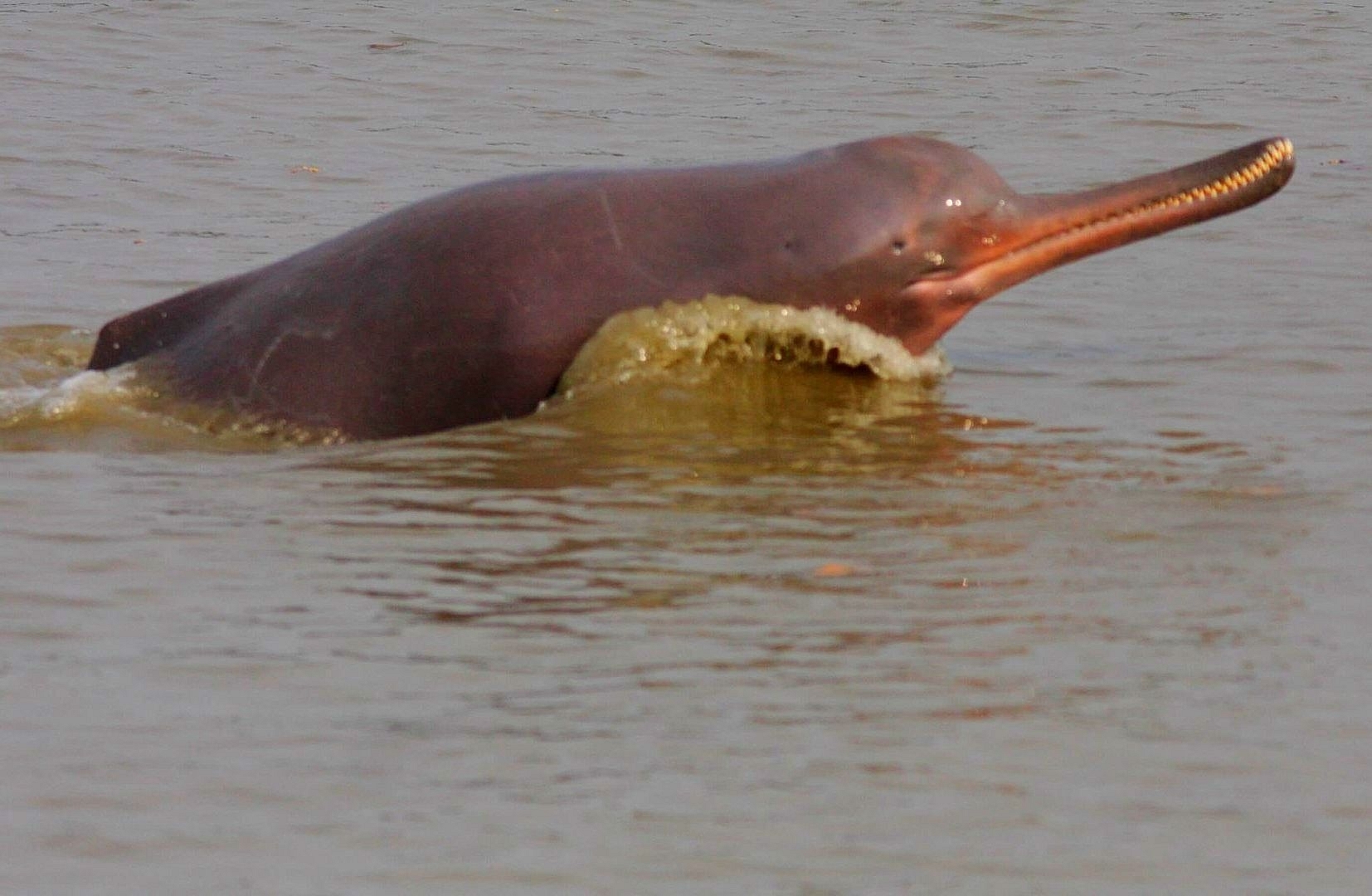News Brief
Everything You Should Know About ‘Project Dolphin’ Announced By PM Modi In This Independence Day Address
- River dolphins, including the Gangetic dolphins, play the vital role of being ecological indicators.
- They point at healthy river ecosystems and are the prime species indicating the conservation status of the river systems.

The Gangetic Dolphin.
Prime Minister Modi announced 'Project Gangetic Dolphin' today (15 August), on the occasion of India's 74th Independence day, for the conservation of the Gangetic Dolphins — as part of the conversation on the riverine dolphin.
PM Modi's announcement — aimed at conserving the riverine and oceanic dolphins — has come 10 years after the Gangetic Dolphin was declared the national aquatic animal (2009).
River dolphins, including the Gangetic dolphins, play the vital role of being ecological indicators. They point at the healthy river ecosystems and are the prime species indicating the conservation status of the river systems.
Prime Minister Modi's announcement will be backed by work from the Ministry of Environment, Forests and Climate change (MoEF).
Project Dolphin is a 10-year project and follows the conservation projects of fame dedicated to the conservation of tigers, under Project Tiger, and elephants, under Project Elephant, in Indian animal conservation history.
MoEF is working towards addressing conservation concerns. The project will embrace scientific conservation methods, and envelope the existing stakeholders that are dependent on the rivers that cradle the freshwater dolphin.
The Gangetic River Dolphin has her home in the waters of the Ganga and Brahmaputra. It is also found in the Meghna and Karnaphuli river systems (outside the Indian territory — in Nepal and Bangladesh).
Reportedly, the freshwater dolphins in the Indian territory account for 80 per cent of the total dolphin count.
The Gangetic dolphin is among the subspecies of the South Asian River Dolphin. The Indus Dolphin — one of the two subspecies — is found in the Beas river.
Platanista Gangetica, the species of freshwater dolphins found mainly in the Ganga, has been spotted in Uttar Pradesh, Bihar, Jharkhand, West Bengal, and Assam.
The Gangetic dolphin lives in freshwater — the deep areas. It catches prey using ultrasonic sound waves.
It is a slow breeder (breeds every 2-3 years). A healthy habitat and sustainable environment helps their count grow.
The project aims at empowering the Gangetic dolphin through conservation by ensuring the stakeholders, who mainly are people depending on river-based livelihoods, are protected.
The concern for the preservation of the freshwater dolphin has river pollution and river-based livelihoods as its central issues.
The ministry will address these issues and river-dependent people's concerns in Project Dolphin.
The World Wide Fund for Nature-India (WWF-India) and the Uttar Pradesh forest department found, in a survey of Ganga River Dolphins, that there was an increase in the dolphin count between 2015 and 2018.
The number had risen — from 22 to 33. This was seen as an encouraging development by the animal conservation fraternity.
This particular survey had covered the waters from the Bijnor barrage, where the Ganga enters Uttar Pradesh, to Narora. Officials said that 33 dolphins were found, in addition to three calves.
Officials claimed that this finding indicated that the slow-breeding dolphins have flourished on the stretch and also indicates positive river health and biodiversity.
Their count has suffered understandably because of the fragmentation of habitat, owing to the building of dams and barrages and river-dependent livelihoods.
The WWF website says: "The species is listed 'endangered' by the IUCN and is placed in Schedule I in the Indian Wildlife (Protection) Act, 1972."
The Modi government came up with the proposal of preserving and enhancing the count of the Gangetic Dolphin under the National Ganga Council (NGC).
The NGC is headed by Modi himself.
The objective of this council is primarily the controlling and abatement of environmental pollution in the Ganga. The aims of NGC — protection, prevention, and rejuvenation and achieving a pristine flow of the river — are expected to serve the well being of the Gangetic Dolphin.
The ambitious National Mission for Clean Ganga (NMCG), with its efforts of preservation of biodiversity thriving in the Ganga river, has been working on the Ganges River Dolphin Conservation Action Plan.
Restoring the dolphin's habitat is one of the work areas under this.
The flow of the Ganga is the lifeline for the Gangetic Dolphin and its survival depends on the water levels.
Noteworthy is Modi's announcement for the twin objectives of preserving the Gangetic Dolphin as well as her flowing home — the Ganga.
Though it is the imagery and symbol of the Ghariyal that visioned alongside the roopa of Ma Ganga, the Gangetic Dolphin (known to be found in the Ganga stretches in and from Bijnor along with the Ghariyal), must find representation in Indic imagery.
The Gangetic Dolphin must also find visual representation along with the Ghariyal in projects dedicated to the Ganga and government portals associated with the Ganga, and most necessarily, in Indian school curricula.
Support Swarajya's 50 Ground Reports Project & Sponsor A Story
Every general election Swarajya does a 50 ground reports project.
Aimed only at serious readers and those who appreciate the nuances of political undercurrents, the project provides a sense of India's electoral landscape. As you know, these reports are produced after considerable investment of travel, time and effort on the ground.
This time too we've kicked off the project in style and have covered over 30 constituencies already. If you're someone who appreciates such work and have enjoyed our coverage please consider sponsoring a ground report for just Rs 2999 to Rs 19,999 - it goes a long way in helping us produce more quality reportage.
You can also back this project by becoming a subscriber for as little as Rs 999 - so do click on this links and choose a plan that suits you and back us.
Click below to contribute.
Latest